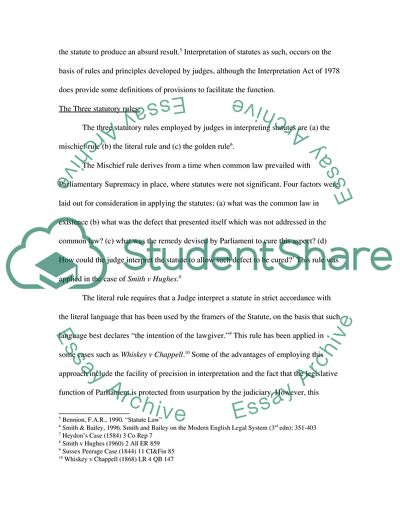Cite this document
(Statutory Interpretation Assignment Example | Topics and Well Written Essays - 1500 words, n.d.)
Statutory Interpretation Assignment Example | Topics and Well Written Essays - 1500 words. https://studentshare.org/law/1705792-in-interpreting-statutes-and-developing-the-common-law-the-judiciary-are-creating-the-law-rather-than-simply-acting-as-adjudicators-discuss
Statutory Interpretation Assignment Example | Topics and Well Written Essays - 1500 words. https://studentshare.org/law/1705792-in-interpreting-statutes-and-developing-the-common-law-the-judiciary-are-creating-the-law-rather-than-simply-acting-as-adjudicators-discuss
(Statutory Interpretation Assignment Example | Topics and Well Written Essays - 1500 Words)
Statutory Interpretation Assignment Example | Topics and Well Written Essays - 1500 Words. https://studentshare.org/law/1705792-in-interpreting-statutes-and-developing-the-common-law-the-judiciary-are-creating-the-law-rather-than-simply-acting-as-adjudicators-discuss.
Statutory Interpretation Assignment Example | Topics and Well Written Essays - 1500 Words. https://studentshare.org/law/1705792-in-interpreting-statutes-and-developing-the-common-law-the-judiciary-are-creating-the-law-rather-than-simply-acting-as-adjudicators-discuss.
“Statutory Interpretation Assignment Example | Topics and Well Written Essays - 1500 Words”. https://studentshare.org/law/1705792-in-interpreting-statutes-and-developing-the-common-law-the-judiciary-are-creating-the-law-rather-than-simply-acting-as-adjudicators-discuss.


